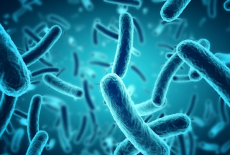

GCSE BIOLOGY REVISION: INFECTION AND RESPONSE
Please note: Text in bold is what the AQA GCSE biology specification requires an understanding of.
Communicable diseases
Students should be able to explain how diseases caused by viruses, bacteria, protists and fungi are spread in animals and plants.
Pathogens are microorganisms that cause infectious disease.
What is a pathogen?
A microorganism that can cause a disease. There are four types of pathogens; bacteria, viruses, protists, and fungi.
Examples Include:
In animals
Viruses- Influenza
Bacteria- pneumonia
Protists- malaria
Fungi- athletes foot
In plants
Viruses- Tobacco mosaic virus
Bacteria- Fireblight
Proctists- downy mildew
Fungi- ringworm
So how do these microbes cause disease?
Communicable diseases are those that can be spread via various routes of transmission. Common examples are ebola, flu and HIV/AIDS. Microbes find a host, and reproduce (for viruses they replicate), as they increase numbers, they start to make the host feel ill. They are able to adapt to such conditions that they can complete their life cycles, enabling them to cause further disease.
Not all diseases are due to pathogens, for example inherited diseases (like diabetes and cystic fibrosis), deficiency diseases and developmental diseases like cancer.
Thus, communicable diseases have requirements for transmission.
Pathogens may be viruses, bacteria, protists or fungi. They may infect plants or animals and can be spread by direct contact, by water or by air.
Examples of ways diseases can be spread:
Direct contact
Air
Water
Food
Vector
Droplet infection
Objects
Direct contact can be as much as sexual intercourse or as little as holding hands. Microbes can remain in the air, this is particularly more prevalent in highly populated poorer countries. Additionally, if someone coughs or sneezes into the air, the tiny droplets released can then infect others. Droplet infections include sneezing and coughing. Water is a perfect site of contamination. Additionally, some vectors (organisms which spread diseases) have parts of their life cycles in water, thus enabling a spread of disease. An example of a vector is a mosquito. Mosquitoes spread the protist which causes malaria (MOSQUITOES DO NOT CAUSE MALARIA), part of their life cycles are in water. Microbes can contaminate food, if the food is not thermally treated, this can cause diseases which can cause food poisoning. If an infected person touches an object or surface, the microbes will remain on that surface, then someone else can come along an infect themselves through touching the surface or object and not washing their hands.
Students should be able to explain how the spread of diseases can be reduced or prevented.
There are various ways in which pathogens can be prevented, such as:
Sterilising water
Good hygiene for food
Good hygiene for objects and surfaces
Vaccination
Use of contraception
How does this work?
Chemically treated water removes pathogens from contaminated water.
Cooking foods efficiently and storing food in the suitable conditions.
Use disinfectants on surfaces to kill pathogens.
A vaccination is a weakened version of a pathogen, it is inserted into the body to get the immune system cells working, they can therefore learn how to respond to the pathogen without the pathogen causing disease.
Contraception, such as condoms create a barrier for the spread of sexuallu transmitted diseases.
image- https://www.google.co.uk/url?sa=i&source=images&cd=&ved=2ahUKEwjH-amDyZ_eAhWixoUKHRH_CrIQjxx6BAgBEAI&url=https%3A%2F%2Fnews.liverpool.ac.uk%2F2017%2F08%2F02%2Frisk-to-europes-most-dangerous-pathogens-revealed%2F&psig=AOvVaw1_DiSbLO9GuMGhbds2THQf&ust=1540487430264003

0 Comment:
Be the first one to comment on this article.